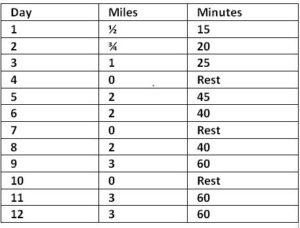Ready to try a new activity that will enhance your kickboxing? Hiking is a great addition and will give you even more endurance, a stronger heart and leaner, more muscular legs. If you’re new to hiking, you’ll want to take steps to make sure you are well prepared. In this post, we’re going to look at some tips and techniques that will “kick-start” your hiking journey.
Kickboxing is different from hiking so before you begin, you should make sure your body is ready for the challenge. Proper training will not only make hiking more enjoyable, but it can also protect you against injuries.
Taking the First Step
Before you begin any training you need to make sure that your body is healthy enough to hike. Taking your body beyond its limits can even put you at greater risk. First tell your doctor when you plan to start hiking; he or she can encourage you and give you advice. If you’re over 40 and have a history of heart or health problems you should also ask your doctor for a physical exam.
Your doctor will be able to do a stress test to discover any heart conditions or abnormalities that you may have. Also, you should identify and solve other problems like flat feet, allergies or vertigo before you begin exercise or hike.
Second- before you begin training you also need to establish what your fitness baseline is. Recording your fitness levels before you start your exercise program will help you judge how much improvement you’ve made. Here are some main numbers to record: current weight, current height, waist size, and resting heart rate, maximum heart rate, intensive training heart rate and your flexibility.
Start Walking More
You don’t have to get ready for a marathon to get in shape for day hiking or backpacking, but you will definitely need to spend more time on your feet. Driving is so common nowadays that walking more than 100 yards at a time can be rare. To increase your daily walking, start by incorporating some following activities in your schedule for 20 to 30 minutes a day at least three times a week:
- Take your dog for a walk
- Run errands on foot instead of driving
- Take a walk during your lunch break or even after dinner
- Opting for stairs instead of an escalator or elevator
- Turn the lawnmower self propeller off when you cut the lawn
- Get off the subway or bus one stop early and walk the rest of the way to your destination
- Deliberately park far away from the grocery store
To keep your feet blister free you can even wear the trail shoes or the hiking boots you plan to wear during your hike to help break them in. I did this for with some new hiking boots I bought to hike the Grand Canyon and it helped tremendously. For a 15 mile hike I did not get one hot-spot.
This program below will give you a good idea of how to gradually hike more miles:
The major muscles in your legs are your hamstrings, quadriceps and glutes and are often the limiting factor in how many miles you can hike. It is difficult to hike when your legs turn to Jell-O or start to cramp up on you. Having stronger legs will help you tackle elevation gains, a heavy backpack or long mileage days.
Strength training is important for those ups and downs on a trail when it goes from flat to sloped. When you’re going up and down on uneven trails, it places more stress on your muscles and joints especially your knees. The steps and switch backs which are put in by Trail builders to lessen elevation gains can cause hikers knees to rebel. You need a combination of high-impact leg exercises with pulse racing endurance workouts to replicate the training you’re going to encounter on the trail. Try these three lower body exercises to increase the muscles on your legs:
Exercises to Target Hiking Muscles:
I love these exercises, which emphasize both leg and core strength, because they can be done at home without the need of equipment.
Wall sit: This exercise is great for increasing quadricep strength which comes in handy during those steep descents. This one is especially beneficial for those with knee problems.
Squats: This exercise is great for all around leg strength and is one of the best leg exercises you can do. If you do have a history of knee problems, start with the wall sit and/or modified versions of the squat until your leg strength improves.
Calf raises: Will increase ankle and calf strength. The stronger your ankles, the less likely you are to turn or twist them when walking over uneven terrain. Also, stretch your calves after finishing the exercise.
Train on the Stairs
If you are not able to actually go hiking on a consistent basis, another option- although not ideal is to train on the stairs. One of my friends is preparing for a 50-mile hike on the Rae Lakes Loop in Kings Canyon National Park. Her routine is going to the gym 3-4 x’s a week; she wears a 25 lb pack and walks up and down the stairs (4 flights) and then will walk once around the track. She then returns to the stairs, goes up and down and then around the track. She repeats this for an hour and a half. I know – this doesn’t sound like very much fun. However, this is a MUST to prepare for those longer hikes.
Stretching
Some people don’t consider stretching to be exercise but if done correctly it can be just as beneficial as a good run. Stretching your muscles during or after workouts increases flexibility, improves your circulation, and relieves stress. Stretching your legs and back after a long day of hiking can drastically reduce aches and pains you might feel the next morning.
Great areas to stretch include the quadriceps, calves, hamstring, groin, pelvic and back. Hold these stretches for a count of 10 to 15 seconds and then repeat three times before switching to a different stretch. You should always keep the movement smooth and under control and should not bounce because this could cause pain and injuries.
In Summary
Hiking can be a great addition to kickboxing and a lifelong activity. It will keep you in super shape mentally and physically, and can be a great way to spend time with friends. Here are the main ideas to remember:
- Before you begin any training see your primary care physician make sure your body is healthy enough to hike.
- To improve your overall hiking fitness, strengthen the muscles in your legs which include hamstrings, quadriceps and glutes as well as your back.
- Do your aerobic exercises like kickboxing, running, cycling or swimming to raise your heart rate in your training zone.
- Stretch your muscles consistently during and after every workout run or hike.
Have other thoughts or suggestions on hiking to help you stay in shape? Please leave in the comments below.






